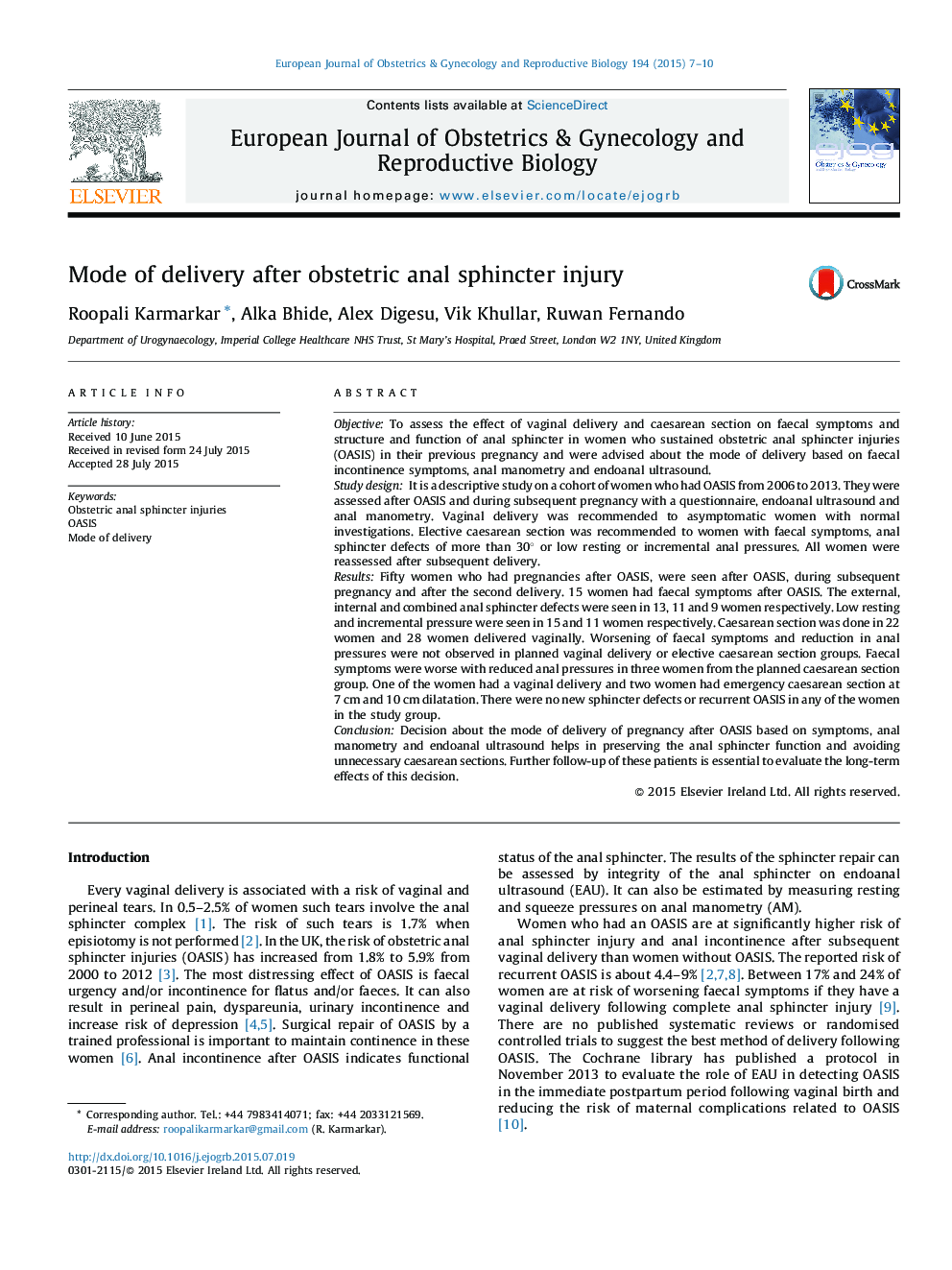| کد مقاله | کد نشریه | سال انتشار | مقاله انگلیسی | نسخه تمام متن |
|---|---|---|---|---|
| 6173129 | 1599787 | 2015 | 4 صفحه PDF | دانلود رایگان |
ObjectiveTo assess the effect of vaginal delivery and caesarean section on faecal symptoms and structure and function of anal sphincter in women who sustained obstetric anal sphincter injuries (OASIS) in their previous pregnancy and were advised about the mode of delivery based on faecal incontinence symptoms, anal manometry and endoanal ultrasound.Study designIt is a descriptive study on a cohort of women who had OASIS from 2006 to 2013. They were assessed after OASIS and during subsequent pregnancy with a questionnaire, endoanal ultrasound and anal manometry. Vaginal delivery was recommended to asymptomatic women with normal investigations. Elective caesarean section was recommended to women with faecal symptoms, anal sphincter defects of more than 30° or low resting or incremental anal pressures. All women were reassessed after subsequent delivery.ResultsFifty women who had pregnancies after OASIS, were seen after OASIS, during subsequent pregnancy and after the second delivery. 15 women had faecal symptoms after OASIS. The external, internal and combined anal sphincter defects were seen in 13, 11 and 9 women respectively. Low resting and incremental pressure were seen in 15 and 11 women respectively. Caesarean section was done in 22 women and 28 women delivered vaginally. Worsening of faecal symptoms and reduction in anal pressures were not observed in planned vaginal delivery or elective caesarean section groups. Faecal symptoms were worse with reduced anal pressures in three women from the planned caesarean section group. One of the women had a vaginal delivery and two women had emergency caesarean section at 7 cm and 10 cm dilatation. There were no new sphincter defects or recurrent OASIS in any of the women in the study group.ConclusionDecision about the mode of delivery of pregnancy after OASIS based on symptoms, anal manometry and endoanal ultrasound helps in preserving the anal sphincter function and avoiding unnecessary caesarean sections. Further follow-up of these patients is essential to evaluate the long-term effects of this decision.
Journal: European Journal of Obstetrics & Gynecology and Reproductive Biology - Volume 194, November 2015, Pages 7-10
